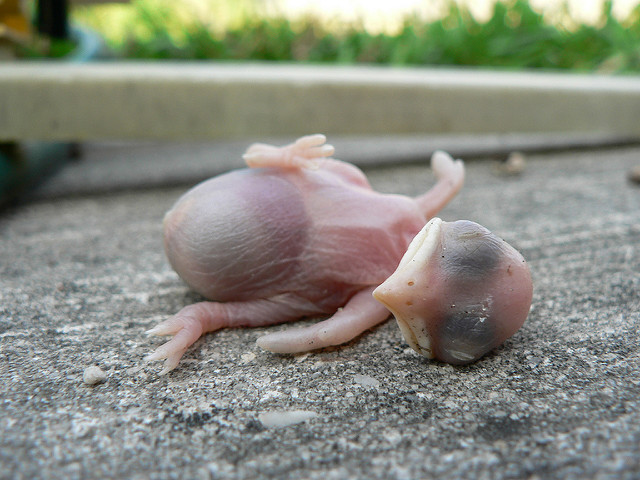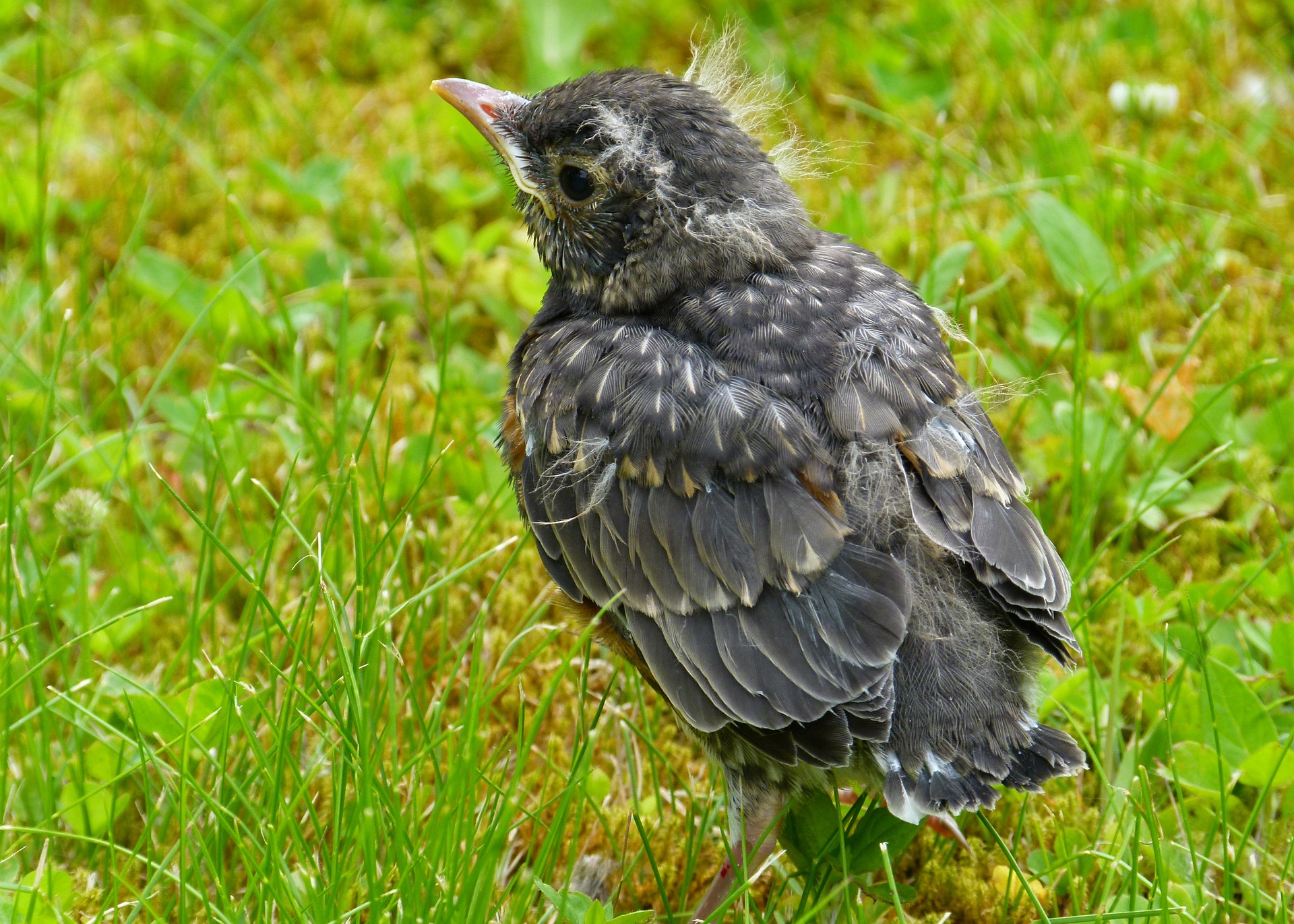Springtime is here, and with it, an influx of sunshine, nests and baby birds. But peppered among the warmer weather is the occasional nasty storm, which can potentially knock baby birds from their nests. The question is, how do you best help a stranded baby bird? While it might be counter-intuitive to leave them on the ground, depending on the baby’s age, doing so might best the best course of action.
The reason some baby birds are on the ground might have nothing to do with a storm at all.
According to RSPCA Wildlife, not all baby birds found on the ground need to be rescued. A lot of bird species, once fledged, will hop around on the ground still being fed by parents for a couple of weeks. Being so, the site asserts that if you find an uninjured baby bird, it’s best to leave it alone and watch it from afar for at least 30 minutes. In that time you will likely see a parent bird come to feed it.

RSPCA, as well as many other wildlife rehabilitation centers, receive many baby birds each year from well-meaning members of the public. The birds they bring in often would have had a better chance of survival had they been left alone in the wild.
As such, raising wild birds in captivity should always be a last resort, the criteria for which is when a baby bird is known to be injured or orphaned. Although it may seem the safer route to raise babies in captivity, birds raised without the advantage of learning from their parents have only a small chance of survival when released. Unless you have the necessary experience, do not attempt to raise a wild baby bird yourself.
Hatchlings and nestlings, however, may need your help getting back into the nest. Contrary to popular belief, the smell of your hands on a baby bird will not cause a parent to abandon it—as it is, birds have a poor sense of smell. But how do you tell if a baby bird needs your help getting into a nest? It’s all in the age:

Three stages of a baby bird:
• Hatchling (usually 0-3 days old)
Its eyes aren’t yet opened. It may have bits of down on its body. It’s not ready to leave the nest.
• Nestling (usually 3-13 days old)
Its eyes are open, and its wing feathers may look like tubes because they’ve yet to break through their protective sheaths. This baby is also not ready to leave the nest.
• Fledgling (13-14 days old or older)
This baby has full feathers. Its wings and tail may be short, and it may not be great at flying, but it can walk, hop, or flutter. It has left the nest, though its parents may be nearby. You don’t need to worry about getting this little guy back to the nest. However, to ensure the baby’s continued safety, you should make sure your cats, dogs and curious children are kept indoors.

It’s important to note that some birds nest on the ground. The baby’s nest might have also dropped to the ground, in which case you can return the baby and the nest to the tree. However, what do you do if you find a hatchling or nestling and there is no nest in sight? You can create a makeshift nest. Put the baby or babies inside of it, and secure it up in a tree. If the baby is injured or you’re still not sure what to do, contact your local wildlife rehabilitation center.
For more information on what to do if you find a baby bird, watch this video:
Sources:
Facebook
Mass Audubon
Audubon Society of Portland
Little Things


